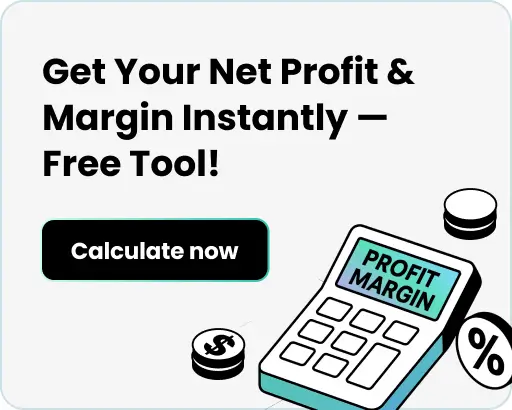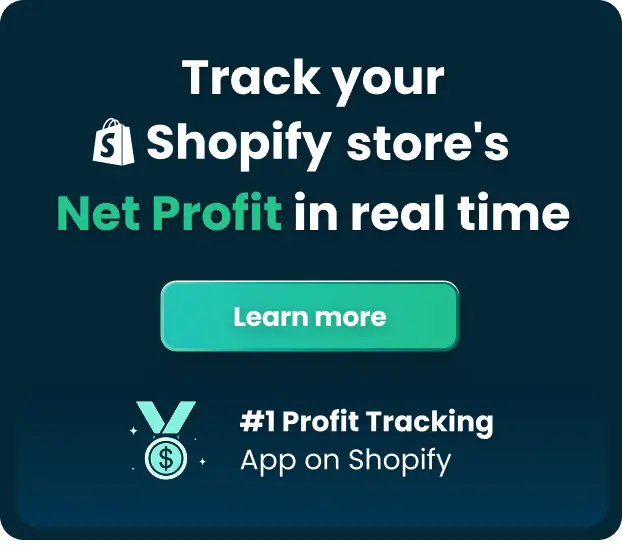What is a Good Conversion Rate? (+ Benchmark By Industry)

Knowing the good conversion rate benchmark helps better evaluate the ads, landing pages, and marketing channels performance.
Let’s break it down with 2025 benchmarks, factors that influence conversion rates, and tips to boost yours.
What is Conversion Rate
Conversion rate (CR) is the percentage of visitors who complete a desired action on your website. That action could be making a purchase, signing up for a newsletter, downloading an app, or filling out a form.
The formula looks like this:
For example, if 1,000 people visit your store and 30 make a purchase, your conversion rate is 3%.
What is a Good Conversion Rate?
A good conversion rate usually falls between 1.5% to 5% across most industries. Anything above 5% is strong, while the rate under 1.5% may signal issues on targeting or landing page experience. Meanwhile, sellers dealing with lower-priced products should benchmark a 2%+ conversion rate. “It’s a solid indicator that your store is performing well”, says Harry Chu, who founded TrueProfit.


That said, 1.5% - 5% isn’t an universal benchmark —still depending on business industries and marketing channels. A 1.5% CR might be poor for a subscription SaaS business but decent for luxury retail. Looking at average conversion rate by industry and by marketing channel is a better way for benchmarking.
Average Conversion Rate by Industry
Here are the 2025 averages across key industries:
- Apparel & Fashion: 2.0%
- SaaS: 2.4%
- Commercial Insurance: 1.6%
- E-commerce (general): 2.3%
- Engineering: 1.1%
- Entertainment: 3.0%
- Financial Services: 1.9%
- Food & Beverage: 2.7%
- Healthcare: 3.2%
- Luxury Goods: 1.3%
- Manufacturing: 2.0%
- Medical Devices: 1.4%
- Oil & Gas: 2.5%
- Real Estate: 2.1%
- Hotels & Resorts: 3.7%
Looking at the list, hotels & resorts lead with the highest average conversion rate at 3.7%, while engineering sits at the bottom with just 1.1%. The average conversion rate for retails falls in 2.3%.
Average Conversion Rate by Marketing Channel
Here are the 2025 averages conversion rate by marketing channel, both in B2B and B2C business:
- Direct Mail: 0.2%
- Email Marketing: 2.7%
- Outdoor Advertising: 0.6%
- Paid Social Ads: 2.6%
- PPC/SEM: 1.5%
- Public Relations (PR): 0.3%
- Public Speaking: 3.0%
- SEO (Organic Search): 2.5%
- Social Media (Organic): 2.0%
- Trade Shows: 0.8%
- Video Marketing: 1.0%
- Webinars: 2.2%
Among these, Public Speaking takes the lead with the highest average conversion rate at 3.0%, while PR lags behind with just 0.3%. Each channel attracts audiences with different levels of intent, which directly impacts how likely they are to take action.
Key Factors Affecting Conversion Rate on Landing Page
Here are the six most important ones to pay attention to:
1. Page Load Speed
According to Google, 53% of mobile users abandon a site if it takes more than 3 seconds to load. A one-second delay can drop conversions by up to 7%, while faster load times directly increase sales.
2. Clarity of Value Proposition
Research shows that a clear, benefit-driven headline can boost conversions by 10–15%, simply because users understand what they’re getting without scrolling.
3. Call-to-Action (CTA) Design
HubSpot found that personalized CTAs convert 202% better than default versions. Its placement, wording, and even color affect conversion rate performance.
4. Mobile Optimization
With mobile accounting for over 58% of web traffic globally, a poor mobile experience kills conversions. Google reports that mobile-friendly sites have a 67% higher chance of converting visitors.
5. Trust Signals
Reviews, testimonials, case studies, and guarantees provide the reassurance they need to move forward. BrightLocal found that 77% of users always check reviews before making a purchase decision, and featuring them can raise conversions by as much as 34%.
6. User Intent Alignment
Matching landing page content with user expectations is critical. WordStream reports that relevant landing pages can double conversion rates compared to mismatched ones, showing how intent alignment drives results.
How to Improve Conversion Rate on Landing Page
Here are 4 proven tactics that help optimize conversion:
1. Simplify Your Landing Page
Simplification means focusing on a single call-to-action (CTA), keeping copy concise, and removing unnecessary elements. The goal of a landing page is to drive one single primary action.
Says a landing page promoting a limited-time sale on sneakers. The primary action here is clicking the add to cart button. Here are some actions retailers can take to optimizing CR:
Step 1. Remove or minimize the site’s top menu to prevent shoppers from browsing away.
Step 2. Place a bold “Add to Cart” button above the fold and repeat it after the product description.
Step 3. Highlight the sneaker’s top benefits—comfort, style, limited-time discount—without overwhelming it with excess details.
Step 4. Avoid unnecessary pop-ups or cross-promotions that compete with the main offer.
2. Use Social Proof
Social proof can come in many forms—reviews, testimonials, star ratings, user numbers, or even trust badges. According to Nielsen, 92% of people trust recommendations from others over brand messaging.
You can try:
- Highlight 3–5 strong testimonials on your page.
- Add customer logos or case studies if selling B2B.
- Use dynamic counters (e.g., “Trusted by 50,000+ businesses”) to show scale.
3. Run A/B Tests
Not every element on a page has the same influence on conversion rate. Testing minor details like font style or background shade often leads to negligible results, while focusing on high-impact elements can uncover real gains.
Here are the components worth prioritizing in A/B tests:
- Headline – Aim for a stronger, benefit-driven headline.
- Call-to-action (CTA) button – Consider the wording, color, and placement of CTA.
- Hero image or video – Testing product photos vs. lifestyle images is common in eCommerce.
- Form length and fields – Reducing from six fields to three helps lower friction.
- Value proposition placement – Make sure unique selling points appear above the fold
- Trust elements – Adding or repositioning reviews, testimonials, or guarantees.
4. Personalize the Landing Page
Personalization tailors the offer to specific segments—by demographics, behavior, or traffic source. It requires a large enough customer database to identify meaningful patterns and the right automated tools or apps to segment and track customer behavior.
Once that groundwork is in place, here are some practical ways to make your landing page feel more personal:
Dynamic text replacement – Match your headline or offer to the ad keyword a visitor clicked on. For example, if someone searched “running shoes,” the landing page headline could say, “Best Running Shoes for Your Next Mile.”
Geolocation-based content – Show city- or region-specific offers, like “Free shipping across New York” or “Same-day delivery in Los Angeles.”
Behavior-driven product recommendations – Highlight items based on what the visitor browsed or abandoned in their cart.
Tailored offers for new vs. returning visitors – First-time shoppers might see a welcome discount, while repeat customers see a loyalty reward.
Final Thoughts
To wrap up, a high-converting landing page is built on understanding its conversion rate. Tracking it helps you make smarter decisions and optimize the page based on customer behavior metrics.
That said, conversion rate is still an early signal—too surface to attribute ad impacts based on it. TrueProfit gives retailers a better solution. It’s a net profit analytics built specifically for Shopify sellers to track their profit and profitability by store, by product, and marketing channel. Tracking true profit helps spot which campaigns and channels are truly driving sustainable growth, so you can make decisions that not only improve conversions but also maximize the bottom line.
Leah Tran is a Content Specialist at TrueProfit, where she crafts SEO-driven and data-backed content to help eCommerce merchants understand their true profitability. With a strong background in content writing, research, and editorial content, she focuses on making complex financial and business concepts clear, engaging, and actionable for Shopify merchants.




 Shopify profits
Shopify profits